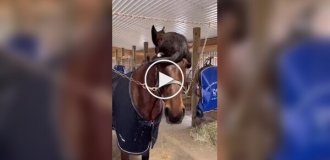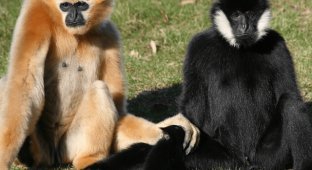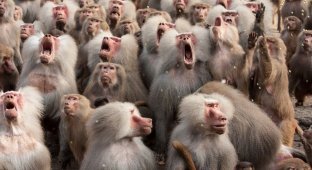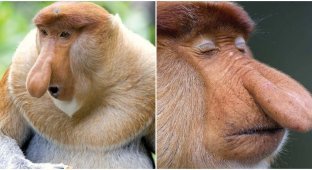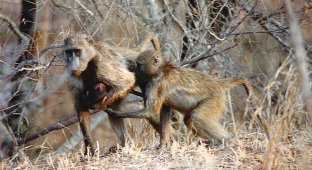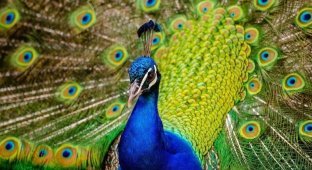Orangutans: The Only Apes with Two Types of Males (14 photos)
We're used to the division into males and females. But our closest relatives, orangutans, are much more interesting! They have males, females, and undecided companions. On the one hand, these are sexually mature males. On the other, they look no different from females. What's that even? 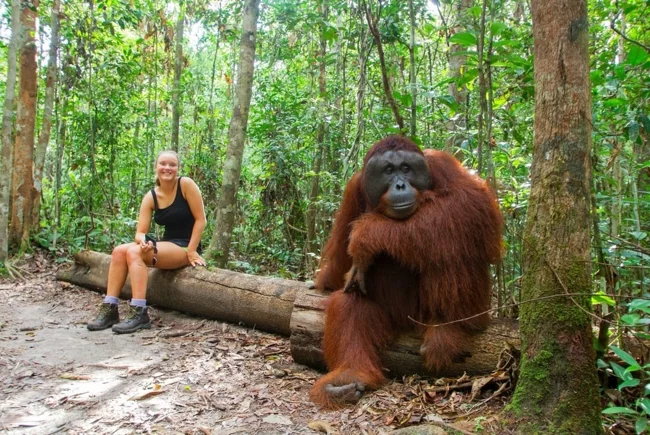
Orangutans are fairly large and extremely intelligent representatives of the great apes. They were once even considered forest people, deliberately not speaking and sitting in trees to avoid being forced to work. And this is not surprising, because these primates really are very similar to us. 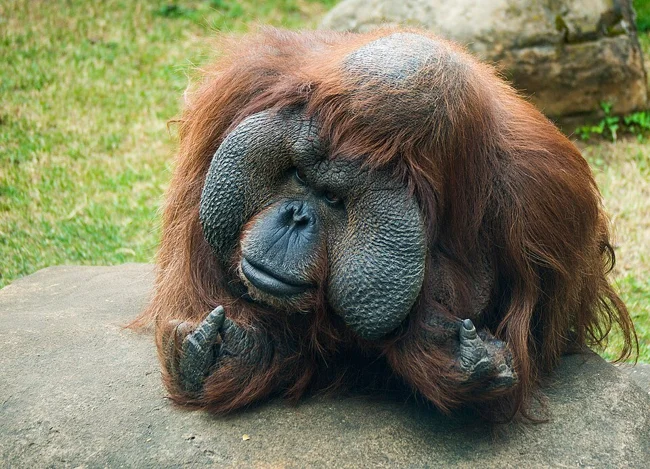
Now that's what I call a man!
Large males grow up to 180 centimeters tall and weigh nearly 80 kilograms—just like the average man! Only they're covered in red fur, with large cheek ridges, a thick beard, and a gigantic throat pouch. In some individuals, it hangs right down to their bellies! The male uses it to amplify his mating calls—a thunderous roar that can be heard for kilometers through the jungle! 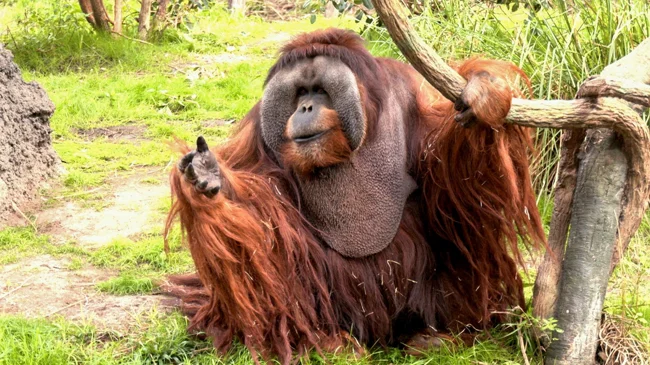
Kid, run for the beer, piglet!
Female orangutans are much smaller: only 115 centimeters and 40 kilograms. Their faces are also neat and cute, without any unnecessary details. But, as it was recently discovered, there is another "species" of male orangutans living among them. 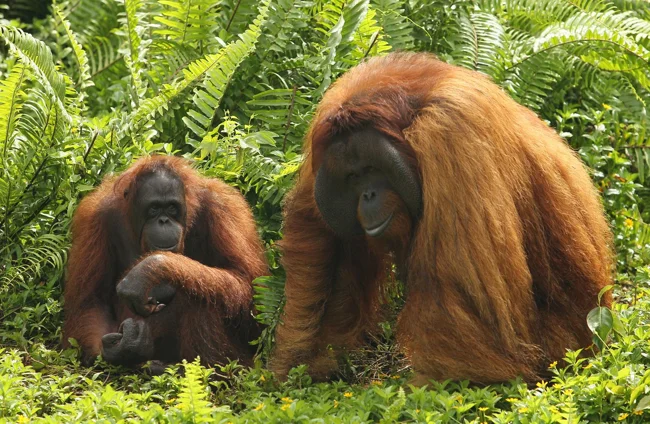
I wonder what shampoo I need to buy to have such luxurious hair?
At first glance, these fellows look very much like females or adolescents. They are the size of an average orangutan. They lack cheek ridges and a throat pouch, and they also lack powerful muscles that could be flexed for show. A sparse beard sometimes grows, something like a virgin mustache. Scientists long believed these males were simply immature individuals. But as it turns out, their reproductive system is perfectly normal. These effeminate fellows periodically mate with females and produce perfectly healthy offspring. 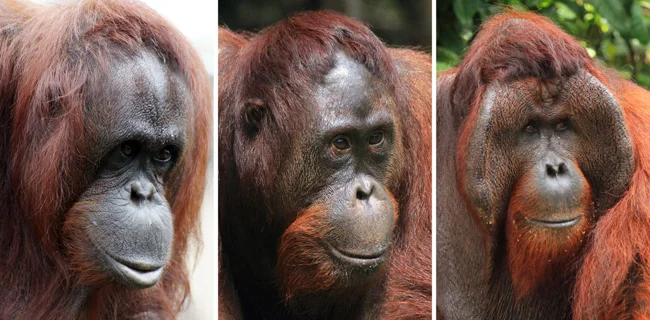
From left to right: female, effeminate male, alpha male.
In biology, there are cases where a single animal species exhibits several built-in variations in appearance within a single sex. For example, the ornate tree lizard. In this species, males have three distinct morphs, distinguished by throat color—orange, green, and blue. Their color is determined genetically: the lizards not only differ in appearance, but also have different DNA and, consequently, completely different personalities and habits. 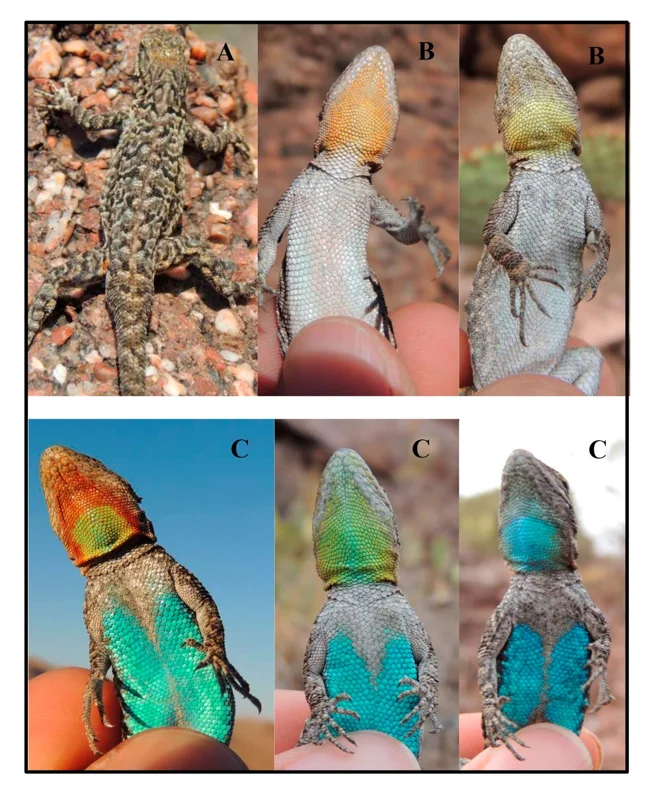
All the differences are visible on the belly. Males with a blue or green patch on their throats are aggressive and dominant, and the larger the patch, the higher their aggression level. However, an orange or orange-green patch indicates a peaceful lifestyle.
Another reason why the same species can look different is hormones. This is the case, for example, with baboons. Their appearance depends on their status. Dominant males flaunt their red muzzles and butts. Subordinate males lack such pronounced traits. But if the alpha male is overthrown, his butt quickly fades. The brain will send a signal to the body that it's time to show off—or you'll get what you deserve. 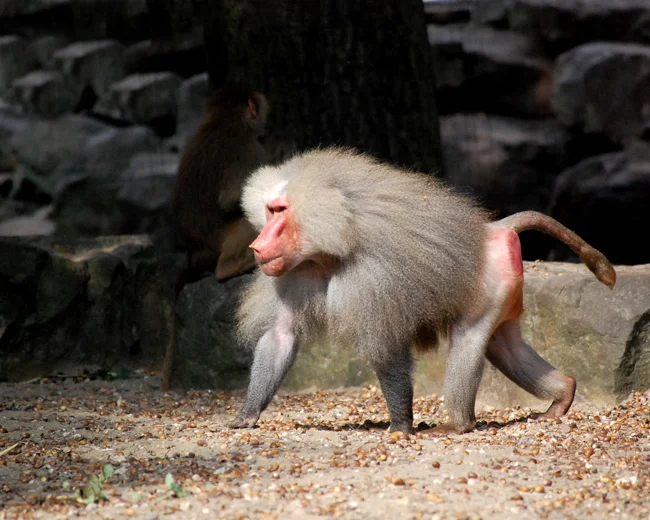
A favorite of all women and simply a handsome man.
But orangutans undergo a unique process. It seems that no other mammal species experiences this! This is all due to their record-breakingly long childhood. Orangutan babies stay with their mothers for a very long time. What's more, they nurse for up to 8 years! Even female elephants close their milk supply by the age of 4-5. And young apes don't reach sexual maturity until they're 15. 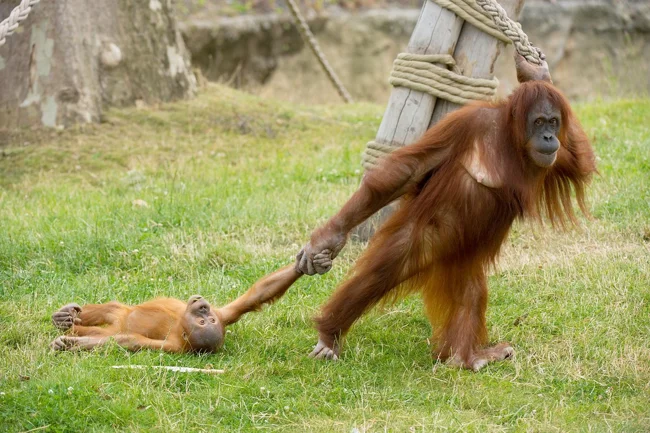
— Mom, when are you going to make something to eat? — Son, come to your senses, you're 30! Go to the store yourself!
For most animals, the maturation process is accompanied by inevitable and irreversible changes in appearance. Under the influence of hormones, muscles increase, additional hair appears, and characteristic behavior develops. However, orangutans go through puberty without the rebellious behavior of adolescence! Outwardly, they remain in a "youthful" form. At the same time, they are quite capable of hanging out with their girlfriends and having offspring! This is the essence of the first species of male orangutan—eternal adolescents on the outside, fully fledged males on the inside. 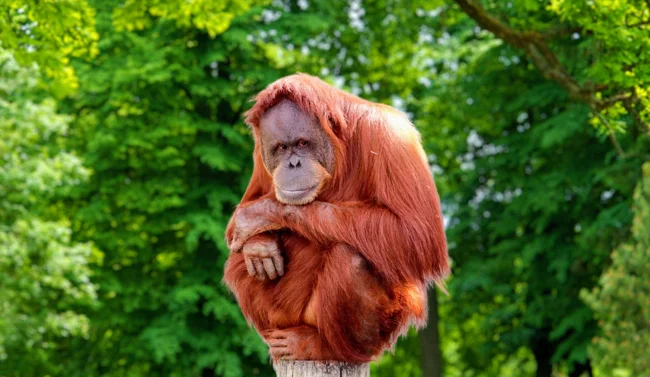
That emo boy no one understands.
Theoretically, every teenage male can "evolve" into a brute: with cheekbones, a beard, muscles, and unparalleled charisma. But in practice, this doesn't happen. The reason is simple: somewhere nearby, there's already a bearded male like him! Alpha orangutans let out thunderous cries that can be heard throughout the forest and mark their territory—it's hard to miss. The presence of a dominant male in the forest lowers the hormonal levels of all the other males around him, so they don't strive to outshine him, but simply sit back and keep a low profile. Their behavior is understandable—if you don't look like a competitor, your chances of getting beat up by a dominant are slim to none. But if you do nothing, you won't get access to females, right? Not at all! 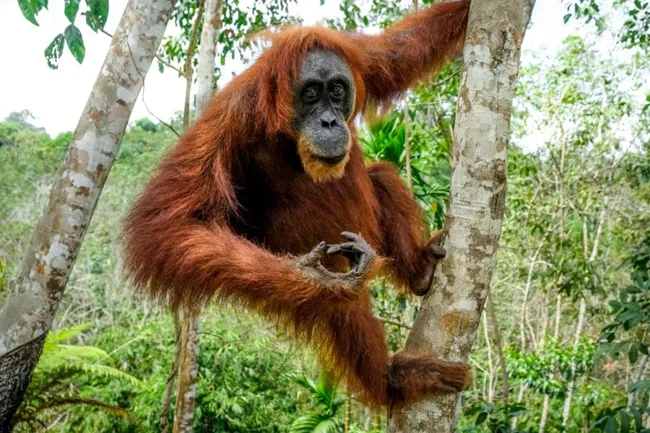
Motivational books are great, of course, but no one wants to get beat up by a real dominant!
Males of the first "adolescent" species use a trick: they wait for the dominant to be distracted, late, or make a mistake. Yes, their offspring numbers are significantly lower than those of the alpha male. Effeminate males have to try their luck with any female they come across—not every one will be in heat. But they don't have to worry about it either. There's no need to guard territory, no need to squabble with other alpha males. You just have to wait for the right moment! Their time of joy comes when the older male retires, gets sick, or dies. For a while, the "teenage orangutans" stage a wild outburst in the forest, openly impregnating all the females around. But all this is temporary. As soon as the dominant male disappears, the hormones of the others start to go wild. 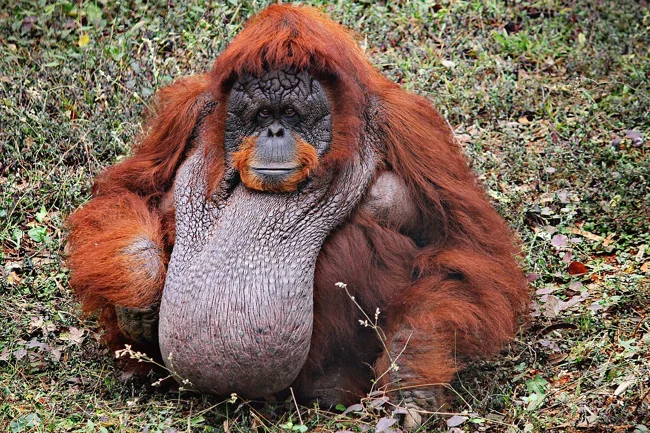
And you're still complaining about your adolescence... The photo shows the very same vocal sac of the alpha orangutan, which helps him scream throughout the forest.
Young males seem to "accelerate" in growth: they gain weight, develop growth spurts, and develop facial hair. A burning desire to claim a particular patch of forest appears. Once a "teenage" male sets out on this path, there's no turning back. His build and appearance will change, and with it his mating behavior. He'll stop being cunning and seeking females in the hunt. Instead, he'll roar at the top of his lungs, calling them to his territory. 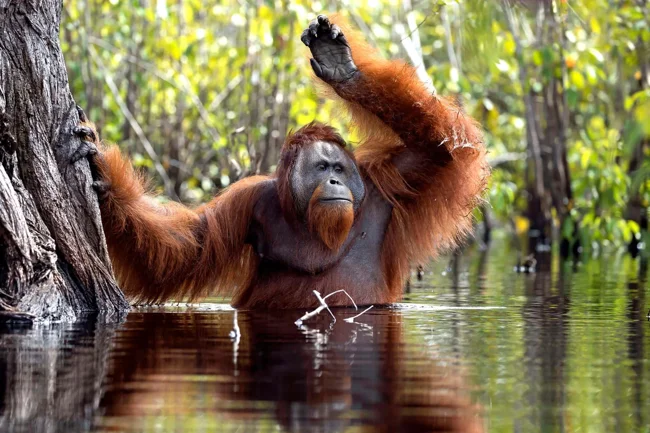
This man can do anything!
The complete metamorphosis will take place within a couple of months. With each passing year, his weight increases, his beard thickens, and his temperament hardens. The gentle, good boy turns into the boss of the neighborhood and the heartthrob of the jungle. Now the females themselves seek him out! Brutal males are far more attractive to them. But these fellows also have a ton of responsibilities! 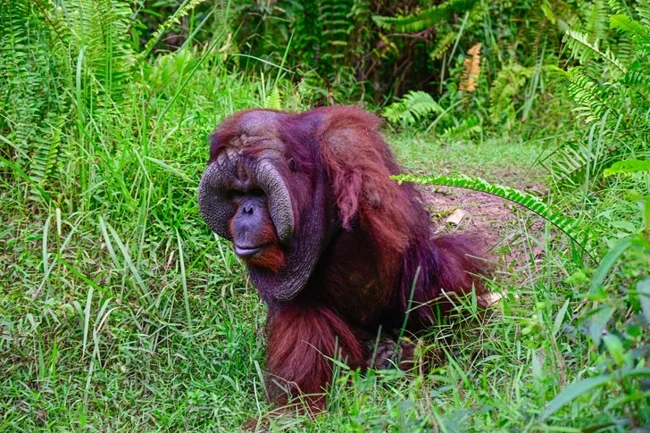
He goes with the men to discuss meat, the sauna, and the carburetor.
First, movement itself becomes a problem. Dominant males weigh twice as much as females and effeminate males. This means they spend at least twice as much energy on maintaining their beloved selves. To have plenty of food and always have it at hand, they need territory. And that's second. Brutal males hold sway over their territory and defend their domains from attacks by their own kind. 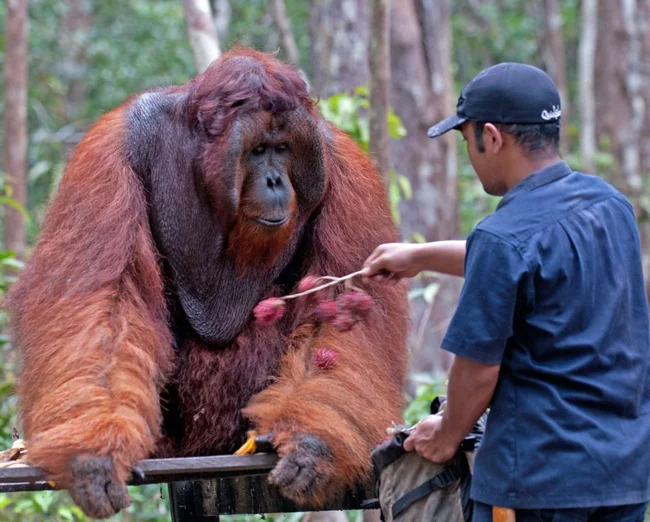
What fruit, uncle? Bring a boar!
Thirdly, slinking from female to female is no longer an option. The alpha male is now responsible for protecting the females from the advances of other males. And that also takes time and energy! Most find it much easier to remain a filthy darling and continue their lineage under female protection.





